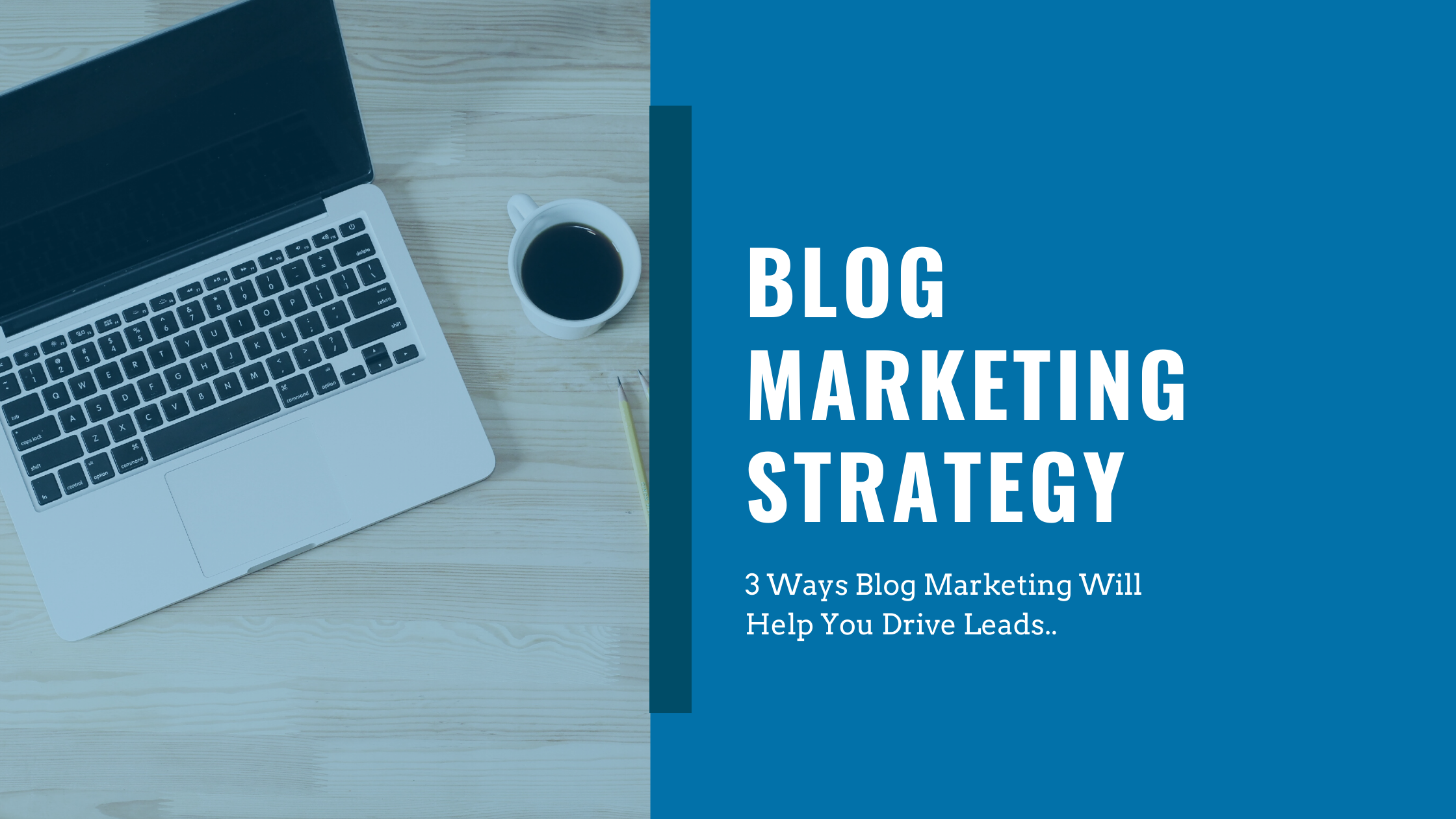Blog marketing has been popular since the early 2000’s. Like anything that has been around for the last 20 years, it starts to become inundated with competition. We’re going to break down why a blog marketing strategy is still an underrated marketing tactic that your business should be using, and how it can help you drive leads.
Regardless of industry, blogging is a great way to communicate directly with your audience and inform them on a topic that can solve their problem. Notice we said ‘inform’, not ‘sell’; It’s important to know the difference between the two.
Here are our top 3 reasons that a blog marketing strategy will help your business drive leads.
- Greatly Enhances SEO
The importance of Search Engine Optimization can’t be overstated. When performed consistently, SEO will continuously drive traffic to your website. Granted, blog marketing and SEO alone won’t drive leads, you’ll need to ensure that the content is:
- Quality
- Informative
- Enabled on an optimized website (speed, navigation, etc.)
Let’s take a look at a few charts that break down the results of traffic for one of our clients after just 1 year of implementing their blog marketing strategy.
From 2019 to 2020, you’ll notice that their traffic sources and main drivers have changed.
Notable Results
Received More Quality (Organic) Traffic – Organic traffic increased from 10% of their overall traffic to now account for 49% of their traffic in 12 months! That’s not to say that they drove more users (you can always increase traffic by spending more money), it’s to say that typically when people find your website organically, it’s because they’re searching for something that your business directly provides.
Ultimately these users will now have more intent to purchase than those that come to your website from digital advertisements that you’re running. Organic sources start with searching for an offering, doing further due diligence once on your website, and finally by the time they’ve (hopefully) reached out they already see your organization as a potential fit for their problem or need.
In this example alone, we’re seeing an increase of +134% in year over year organic traffic.
$30k of Monthly Recurring Revenue Pipeline – You’re probably thinking ‘Okay great, what’s the catch?’. After building quality posts (in addition to the optimization of their website) about the value-add of recurring services, prospects then found those posts online and reached out for more information/proposals on those services.
In 2020 and beyond, your users will reach out with more intent to purchase than they might have in prior decades; The internet has made it so that all of the information you need to make a decision is directly at your fingertips, for FREE.
- Ability to Integrate Within Marketing Campaigns
In this era, content is king and will continue to be in the years to come. Within your marketing campaigns, you need collateral that can be sent out to customers and prospects. In addition to the SEO benefit of your blog marketing strategy, your blog posts will also serve as a piece of content that can be delivered to your audience.
To go along with your 1-pagers, pricing templates, and graphs, blogs will help further inform users on the challenge that you solve. In traditional marketing funnels, you had to continuously inform the prospect on why they need the solution you’re offering, in modern marketing, the user has access to all of the information that they need to make a decision. A blog post can help further validate their thought process; If not, then it may not have been a great fit in the first place.
Here’s a basic example as to what that process might look like:
You kick off an email marketing campaign to drive demand for a newly launched product.
First email – Gauges interest by asking if they’ve considered a product that solves X problem.
Second email – Blog post that informs them a bit more about the solution that you’re offering (not selling).
Third and Final email – An offer with a call-to-action for them to test out the value-add that your organization provides.
In this example you’re able to use your blog post as a part of your email marketing campaign; The blog post is being used to inform (second email), and ultimately get your audience to convert to leads.
By the time a prospect within your target audience reaches out by either replying to an email, submitting a contact form, or even calling, there’s a greater chance that there is intent to purchase because they’ve already had numerous touchpoints from your organization that answers their questions.
- Blogging is Still a Popular Form of Content Consumption
“The vast majority of internet users in 2020 regularly read blogs, and – even though the space itself is becoming ever more crowded – it’s still possible for a new blogger to break through and be successful.” – 99 Firms
Although we’re seeing a gain in popularity of YouTube, Podcasts, Social Media, and the alike for consuming information, blogging is a tactic that still greatly informs users and will be here to stay.
Blogging Then vs. Blogging Now
Regardless of blogging having been around for a while now, it has evolved and adapted much like everything else on the internet. We’re no longer just reading a bunch of words that articulate an organization’s thoughts, it has evolved to include but not limited to:
- Links to other pages
- Infographics within the post
- Pictures
- Graphs
- Embedded video
- Embedded podcast
- Quotes from industry thought-leaders
An impactful blogging strategy will compile different sources of content consumption.
As we continue to compete for user attention, it becomes more difficult to capture that attention without a visually appealing post that a user can either skim through, or read in depth.
Organizations of the future will make it easier for their audience to leverage their platform based on their preference. Here’s what we mean:
- Amazon helps customers shop by showing them items based on their browsing history within their website
- Netflix has an algorithm that shows you movies they believe you’ll like based on watch history within their platform
- Spotify will serve you a variety of songs based on what you’ve previously listened to
The examples above pertain to algorithms created by major firms, but the concept is the same for your blog marketing. By including pictures, infographics, embedded videos, etc. within your blog posts, you’re allowing your audience to consume the information based on how it best suits them, the more options the better.
The point we’re honing in on here is that blog posts aren’t what most people think they are when blogging comes to mind. Effective blogging will compile a variety of content within a post to provide as much value as possible to our audience. Ultimately, the more options you provide your audience to consume your content, the further reach you’ll have within your field of expertise.
Getting Started
Focus on what your organization knows best, and communicate your industry experience to your audience.
Chances are, your competitors that may have an inferior service, but do a better job of communicating their offering, drive more leads than an organization that has failed to monetize blogging based on their experience in the industry.
A blog marketing strategy is a time investment that will start to pay dividends for your business within 8-12 months. Due to the length of time it takes to see results, it’s no wonder organizations can be turned off and decide to just spend money on advertising. However, users that organically reach your business will be much more likely to fit within your target market than those who found you from an advertisement. Remain consistent and continue to convey valuable information to your audience, it’s worth it.
Reach out to learn more or discuss how implementing a blog marketing strategy fits within your organization.

Gary McConnell Co-founded Rubicom Digital in 2019 with a goal of providing digital marketing consulting services in the B2B space.
Gary continues to serve as the Marketing Director of a Data Center-focused IT Provider, VirtuIT Systems.

